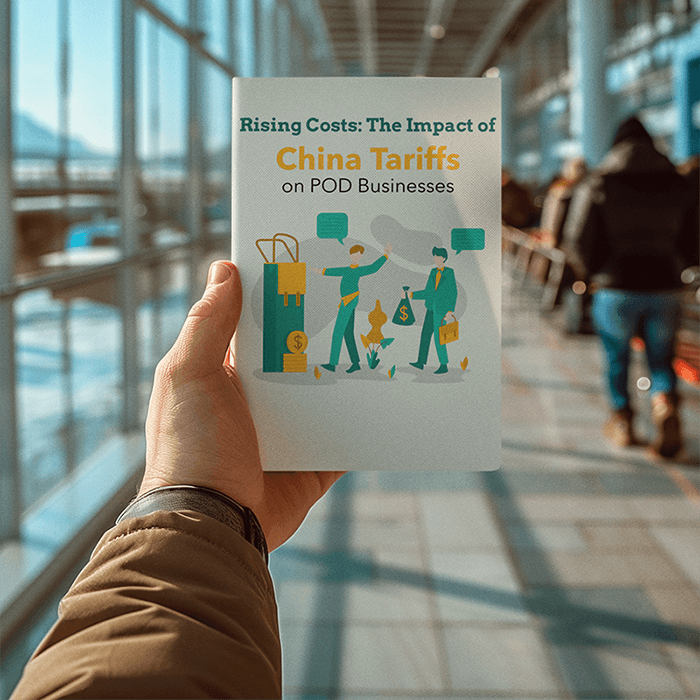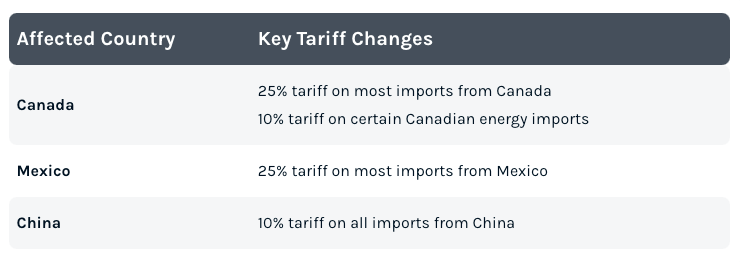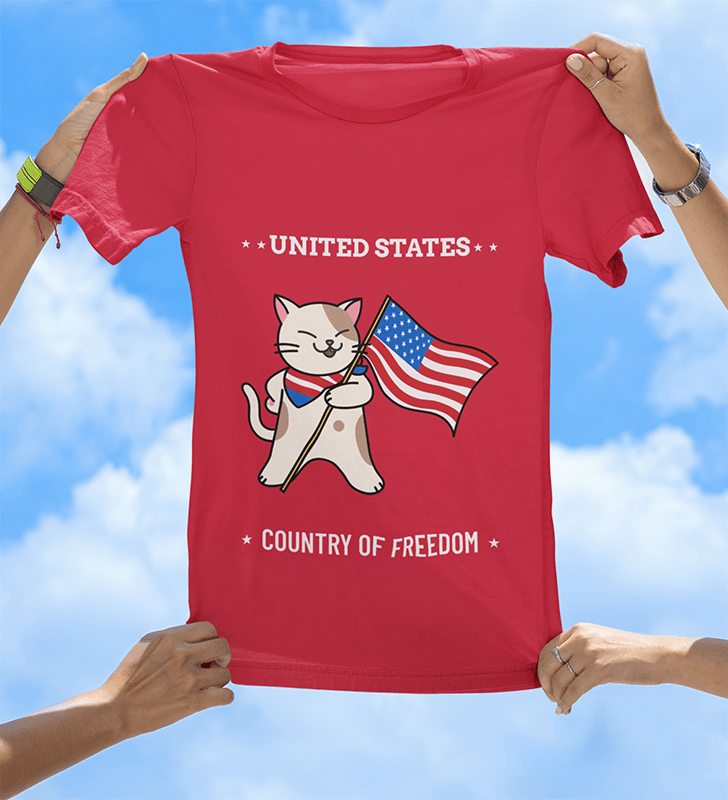Global trade policies are changing with upcoming China tariffs in 2025, but what does this mean for your POD business?
🔍 This Is What You’ll Find:
As you may know, many POD platforms rely on products worldwide and those from China have historically been among the most affordable. With the new US tariffs on China, POD and e-commerce businesses in general and going to have a shift in prices and their business model.
What’s Happening?
Trump has announced new tariffs on most imports from Canada, Mexico, and China, resulting in increased costs for eCommerce brands. This will also impact supply chains, pricing, and the competitive landscape. In a nutshell, a 10% tariff is now applied to goods sourced from China.
💡Try Placeit’s new AI mockup generator to scale up your shop!
These new tariffs will definitely mean an increase in product price, impacting both sellers and buyers.
When?
These changes are set to start in March 2025.
Increased duties (ranging from 10% to 25%) raise prices on key retail goods like electronics, car parts, homewares, clothing, and apparel, placing extra pressure on merchant profit margins that will likely result in higher prices for U.S. consumers
Expected Outcome
-
Higher Operating Costs Including Shipping & Costs
You’ll quickly notice that goods imported from countries affected by tariffs arrive with a higher price tag.
🔥 Check out how to make money on Amazon with your POD
-
Potential Price Spikes for Consumers
Retaliatory actions can increase costs and disrupt established trade routes, pushing companies to explore production in tariff-friendly countries or diversify their sourcing to other countries.
-
Reduced Competitiveness
Higher costs may force sellers to raise prices, making their products less competitive compared to those of sellers using alternative sources.
For sellers who choose not to pass the increased costs on to customers leaving them with less room for marketing, promotions, or scaling their businesses.
-
Global Competitors Avoiding Tariffs
Sellers based in countries not impacted by the tariffs (or those with free trade agreements) may have access to cheaper goods, giving them a pricing advantage over POD sellers affected by the tariffs.
-
Disrupted Supply Chains
Tariffs can complicate logistics and trade routes, leading to delays or additional costs for shipping. This affects delivery times and customer satisfaction, making sellers less competitive in terms of speed and reliability.
🔥 Check out how to make money on Etsy
⚡ Dealing With the US-China Trade
“Printful, a major POD player, could see some impact, though its extensive production facilities in North America and Europe could minimize it. Under CEO Alex Saltonstall, Printful has invested heavily in local manufacturing, enabling stability amid trade fluctuations. Printful’s average profit margins range between 30% and 50%, with monthly revenues from $500 to $5,000 for smaller businesses, and even higher earnings for successful brands
Business owners may need to select carefully their suppliers within any POD platform to become less reliant on China and avoid future price fluctuations. A rise in suppliers costs leads to higher products prices and this may hurt your chance to be competitive in the market.
If you are looking for POD sites with more local options, Gelato, for example, operates with local print facilities, avoiding significant reliance on Chinese suppliers making them a great option. But let’s explore general actions you may take to secure your business throughout this uncertainty:
1. Assess Your Current Costs & Supply Chain
Identify which products or materials are affected by the tariff increase and calculate how it impacts your overall cost structure.
Speak with your suppliers to understand how they’re handling the tariffs and whether they plan to pass those costs on to you.
2. Diversify Suppliers
Explore alternative suppliers: Look for suppliers in countries not affected by tariffs. Popular alternatives include Vietnam, Bangladesh, or even local suppliers in your country.
Consider domestic production: While domestic suppliers may be more expensive upfront, reduced shipping times and costs may help offset the difference. Domestic products may also attract customers who prioritize “Made in [Your Country]” labels.
3. Adjust Your Pricing Strategically
If your costs increase significantly, consider raising your prices slightly. You can offer bundles or free shipping promotions to make price increases less noticeable.
Be transparent with your customers if needed, explaining that external factors like tariffs have influenced prices.
4. Optimize Your Product Catalog
Focus on selling products with higher profit margins to cushion the impact of increased costs.
5. Monitor Trade Developments
Keep a close eye on trade policies and tariffs. The situation can change, and staying informed will help you adapt faster.
Finally
As a print-on-demand (POD) seller, an increase in tariffs on Chinese products can directly or indirectly impact your business, especially if you source raw materials (e.g., apparel, mugs, or other products) or printing services from China.
Build customer trust by offering clear cost transparency. Share a disclaimer and explain the situation when including any shipping or tariff-related fees directly in the checkout process.
Is print-on-demand still a profitable business model? Check it out here! Finally, remember that Placeit by Envato has everything you need to start your business from design and logo templates to professional mockups to showcase every product you can think of!
Not sure how to even start a POD business then head over here!




